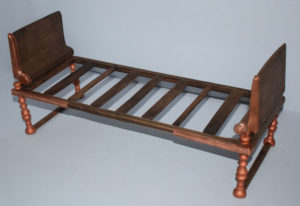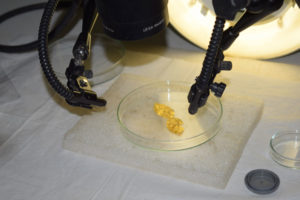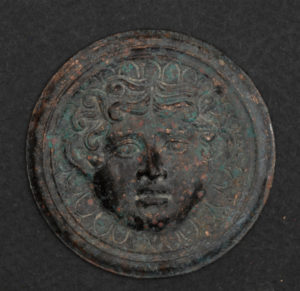
The skeleton of a woman who lived in the 1st century BC lying on her bed was uncovered by Greek archaeologists recently near the city of Kozani, northern Greece.
The discovery was made at a Public Power Corporation (PPC) lignite mine in Eordea, Kozani. Archeologists say that the remains probably belong to a wealthy woman. Symbols for the Greek god Apollo were decorating her bed.
The leader of the excavation, Dr. Areti Hondrogianni-Metoki, presented the discovery in 2021.
Skeleton found lying on bed never encountered before in Greece
One of the extraordinary objects excavated at the lignite mines was the bed and remains of a 1st century BC woman.
Although there is evidence that people were often buried in their beds in ancient times, this was the very first time archaeologists excavated someone buried that way in Greece.
Dr. Hondrogianni pointed out that during other excavations, bed accessories have been found but this is the first time an entire bed had been preserved. In 2020, an attempt was made by specialists at restoring the bed.
Most of the bed was made of bronze, which is why it survived over the millennia. The wooden parts of the bed had unfortunately decomposed prior to being excavated. For this reason, archaeologists devoted time to restoring the bed in 2020.

The fruits of their labor were presented at the conference in the form of the reproduction of the original bed. This included the wooden elements, which were pieced together through studying information they had gleaned at the excavation.
This is a landmark archaeological finding, which has confirmed that Greeks of this period were indeed buried in their beds.
Ancient skeleton may be of royal woman
The identity of the woman whose remains were found continues to be unknown. However, she is notable due to her wealthy—and perhaps royal—status.

Luxury objects were found buried around the woman, and she herself was found with golden laurel leaves around her head. Archaeologists believe that these may have been woven into a wreath for her to wear.
The woman was middle-aged and is theorized to have belonged to a royal family, as there have been other archaeological discoveries in the wider area that point to royalty having settled there.
However, there is also the possibility that she was someone with great religious authority, which would also explain the wealth of the objects buried with her.
Symbols of Apollo found on her bed
Parts of her bed were also decorated, according to the archaeologists. The ends of the bed were decorated with the heads of mermaids, but the decorations adorning the top of the bedstead hold particular significance.

This part of the bed bears the symbol of an aquatic bird holding a snake in its mouth, a known symbol for the god Apollo because of the Greek myth which recounts him having killed the snake in Delphi, subsequently saving the world.
The laurel tree and leaf is also sacred to Apollo, meaning that the leaves found on the woman’s head may have also been symbols for Apollo.
Archaeological findings in nearby Mavropigi show the remains of a sanctuary for Apollo.
Further archaeological study is necessary
The woman’s remains have been transported to the Archaeological Museum of Aiani, where they will be studied further. The museum‘s laboratory is expected to be able to confirm her age and gender, as well as determine her cause of death using anthropological information.
The main goal of the Ephorate of Antiquities of Kozani is to create a life-size reproduction of the bed that was found as part of the burial This would be exhibited at the Archaeological Museum of Aiani for the public to view.
See all the latest news from Greece and the world at Greekreporter.com. Contact our newsroom to report an update or send your story, photos and videos. Follow GR on Google News and subscribe here to our daily email!



